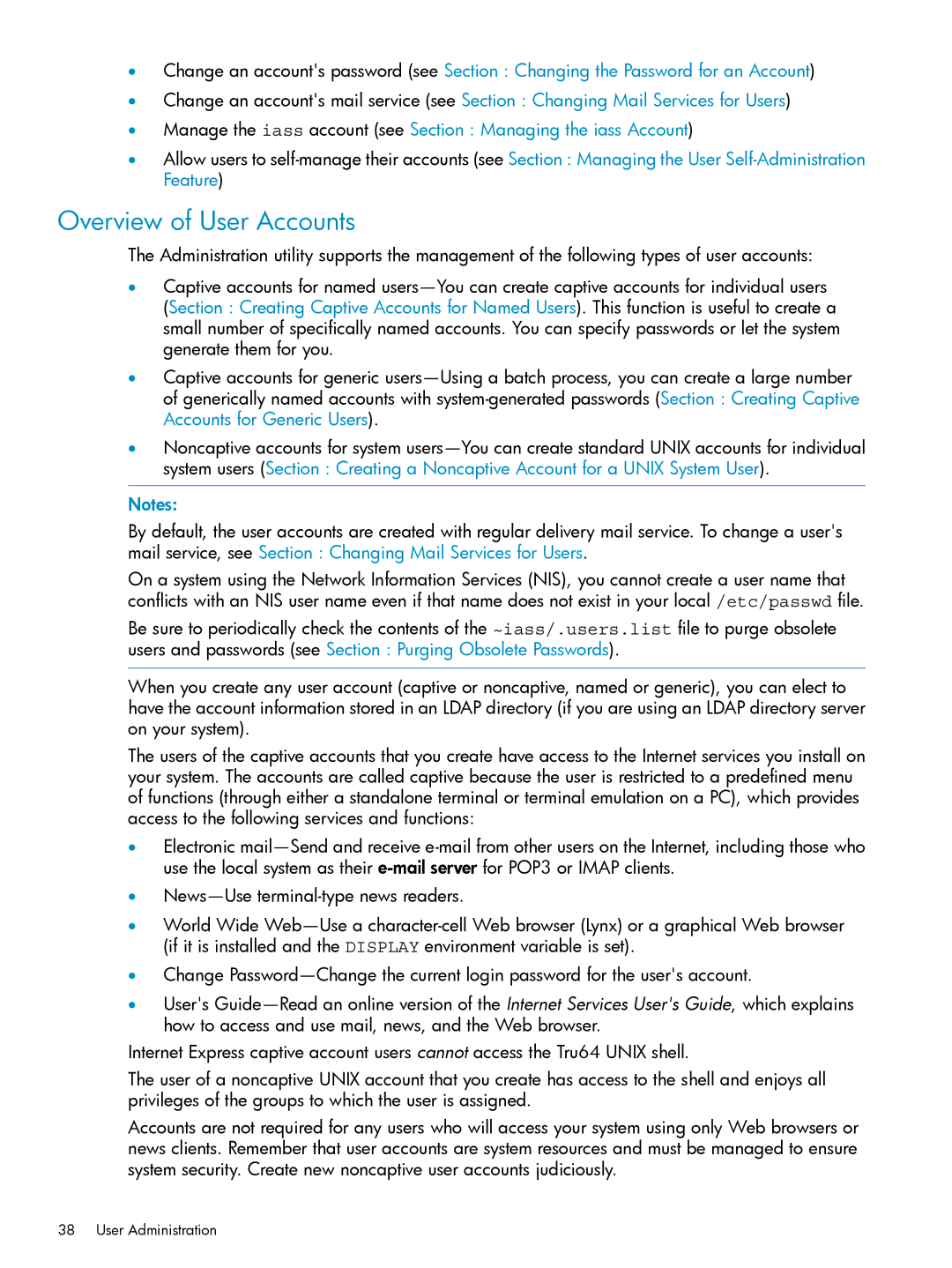
•Change an account's password (see Section : Changing the Password for an Account)
•Change an account's mail service (see Section : Changing Mail Services for Users)
•Manage the iass account (see Section : Managing the iass Account)
•Allow users to
Overview of User Accounts
The Administration utility supports the management of the following types of user accounts:
•Captive accounts for named
•Captive accounts for generic
•Noncaptive accounts for system
Notes:
By default, the user accounts are created with regular delivery mail service. To change a user's mail service, see Section : Changing Mail Services for Users.
On a system using the Network Information Services (NIS), you cannot create a user name that conflicts with an NIS user name even if that name does not exist in your local /etc/passwd file.
Be sure to periodically check the contents of the ~iass/.users.list file to purge obsolete users and passwords (see Section : Purging Obsolete Passwords).
When you create any user account (captive or noncaptive, named or generic), you can elect to have the account information stored in an LDAP directory (if you are using an LDAP directory server on your system).
The users of the captive accounts that you create have access to the Internet services you install on your system. The accounts are called captive because the user is restricted to a predefined menu of functions (through either a standalone terminal or terminal emulation on a PC), which provides access to the following services and functions:
•Electronic
•
•World Wide
•Change
•User's
Internet Express captive account users cannot access the Tru64 UNIX shell.
The user of a noncaptive UNIX account that you create has access to the shell and enjoys all privileges of the groups to which the user is assigned.
Accounts are not required for any users who will access your system using only Web browsers or news clients. Remember that user accounts are system resources and must be managed to ensure system security. Create new noncaptive user accounts judiciously.
